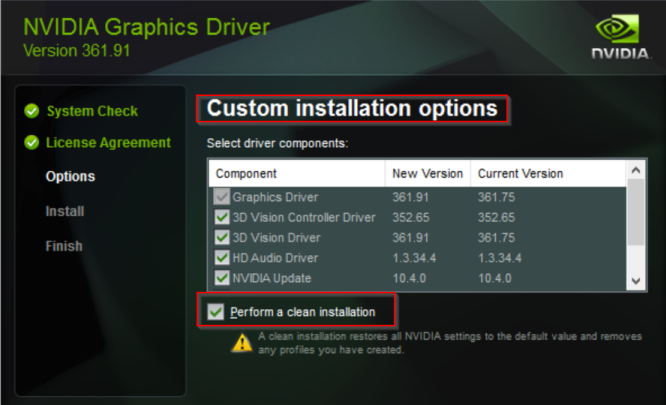System Requirements: Rendering
A list of supported operating systems and minimum requirements for hardware and memory.
| System/Hardware Information | Windows | |
|---|---|---|
| Operating Systems | 10 (64-bit) 11 (64-bit) |
|
| Memory | 16 GB (higher recommended) | |
| Complete Install Disk Space ~8 GB temporary disk space required for full 2023 installation |
Applications 110 GB |
Help 12 GB |
| Graphics Hardware | OpenGL 3D graphics accelerator
compatible with OpenGL 3.3 or higher Vulkan 1.2 or higher OpenCL 2.1 required True color (24-bit) support Install/update to most recent OpenGL patches/drivers 1920x1080 screen resolution or higher for optimal user experience 4 GB or higher dedicated RAM Only dedicated NVIDIA, AMD, Intel® Arc™ GPUs are supported (Integrated onboard Intel® chipsets are not supported) |
|
Additional Information on Driver Installations
The NVIDIA Driver Update recommendation is to use the Custom installation option and select the Perform clean installation option to validate that there are no conflicts in DLL/drivers.

1
Number of simultaneous jobs. Use of a workload management middleware like Altair PBS is highly recommended to insure optimal and dedicated usage of the CPU resource
2
Typical node configuration is based on dual CPU socket processors
3
It is extremely important to populate all the memory banks on the mother board.
4
In Hybrid mode, it is recommended to set a number of MPIs that is a multiple of the number of sockets and then set the number of OpenMP in a way that number of MPIs x number of OpenMP equal number of physical cores.
5
Hyper Threading (HT) may increase performance by around 10% on single node. In this case, recommended setup is to run 2 OpenMP per MPI, with a number of MPIs that matches the total number of physical cores on the node. On multi-node, it is better not using HT